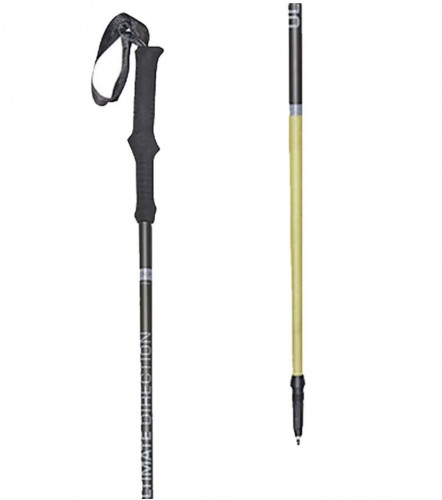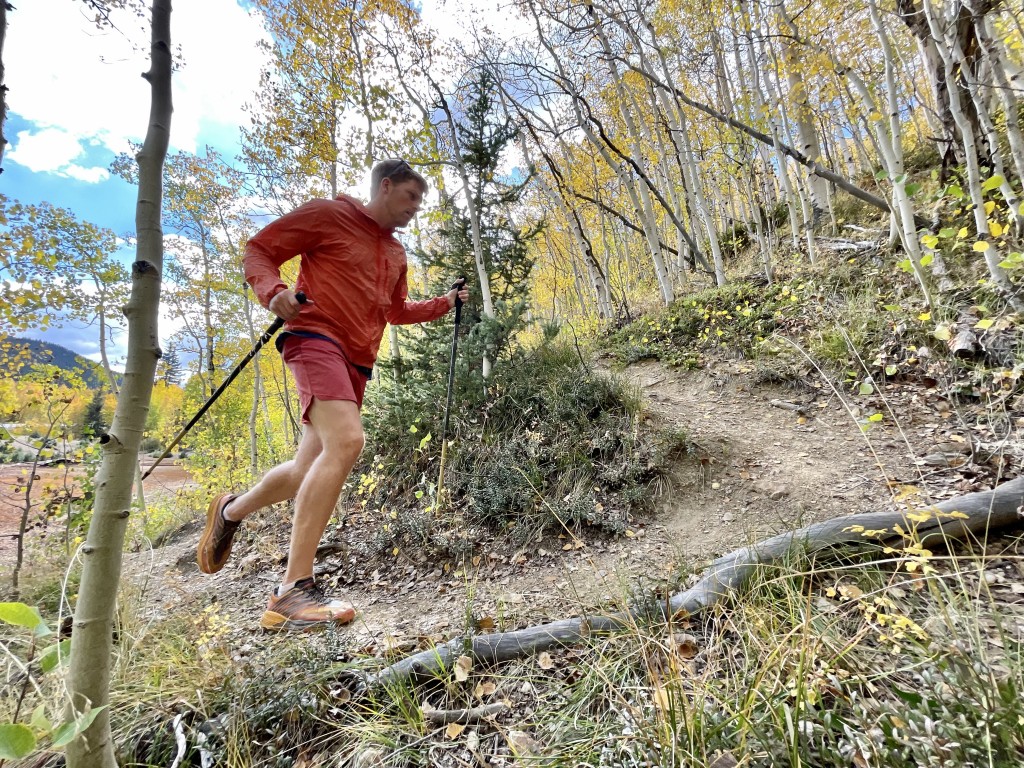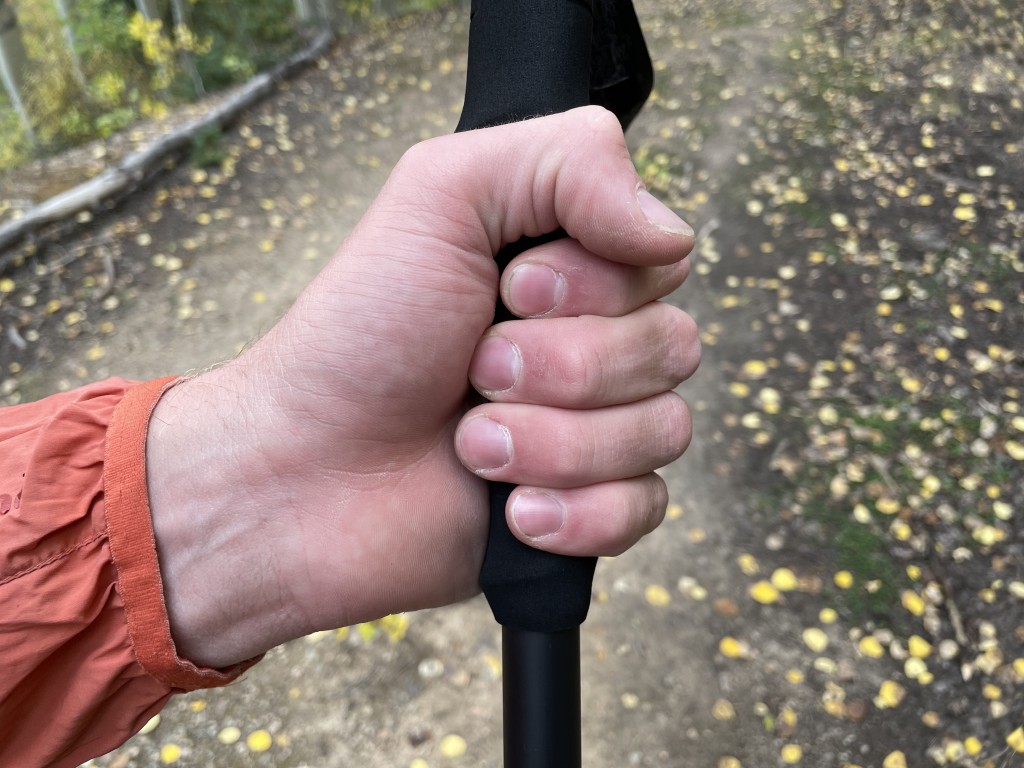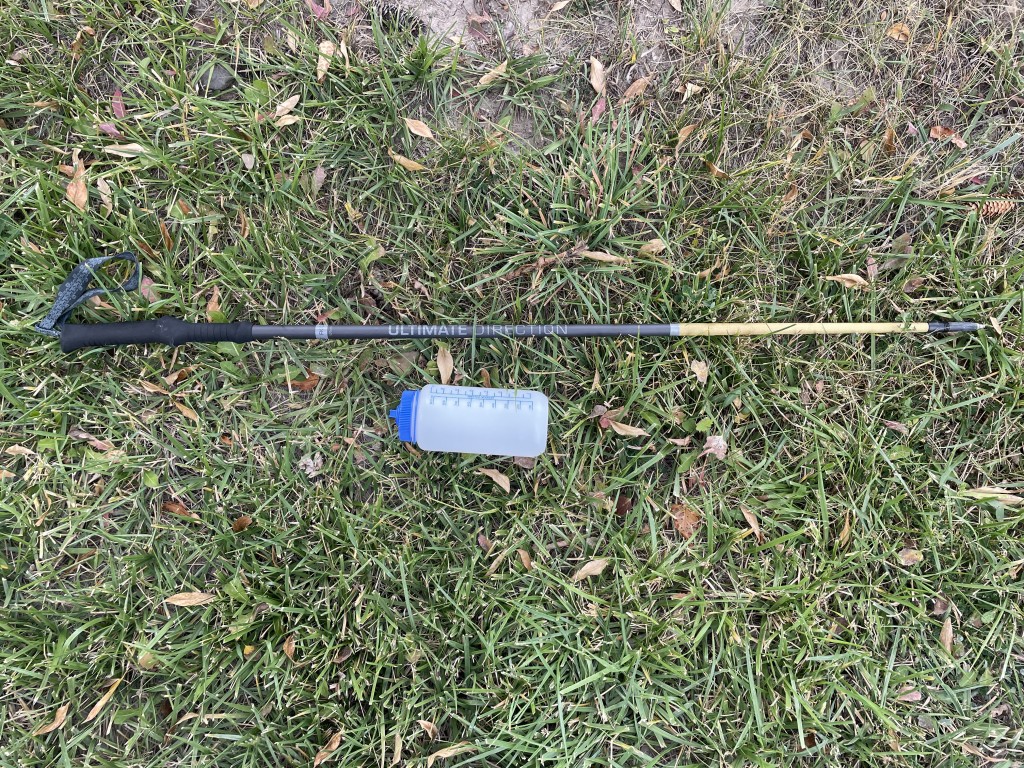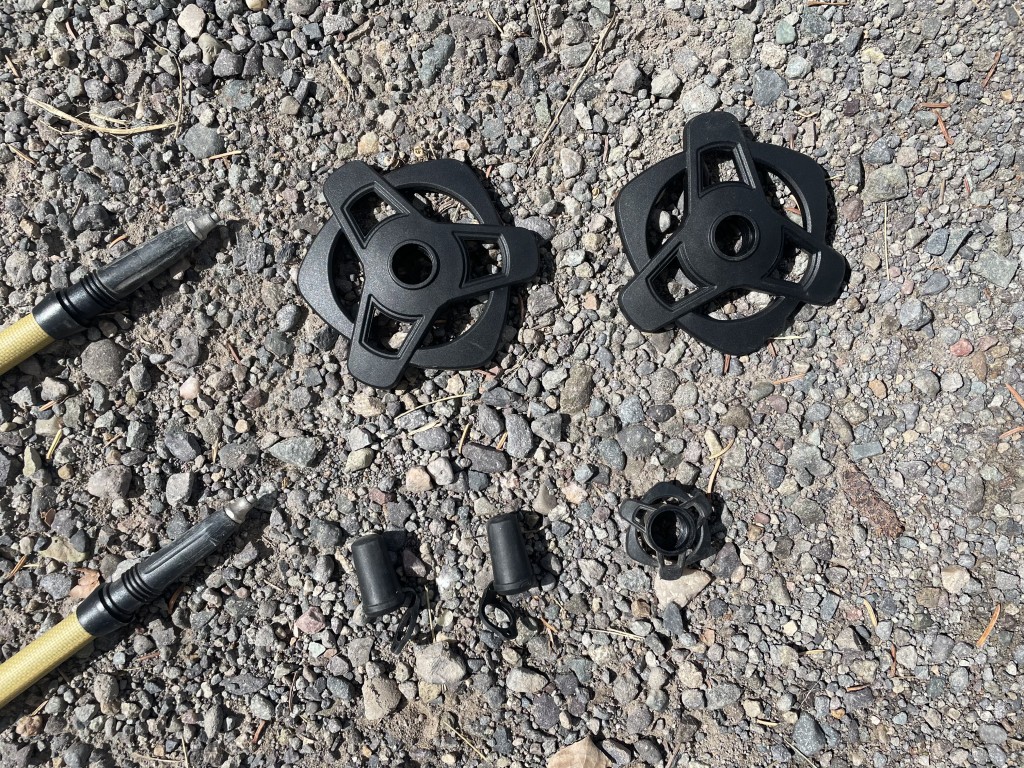Ultimate Direction FK Ultra Poles Review
Our Verdict
Our Analysis and Test Results
The Ultimate Direction FK Carbon poles stand out for their low weight but also for their lack of collapsibility and adjustability.
Performance Comparison
Comfort
The grips on the FK Carbon have gentle contours that didn’t always fit our testers’ hands perfectly. The thin, silky wrist straps, on the other hand, are very comfortable and make up for the grip’s shortcomings. The top of the handles don’t feature a rounded pad, so it’s uncomfortable to push down from above. That said, these poles are designed to give runners an edge on the uphill, with the hands placed through the wrist straps — in this configuration, these poles are very comfortable. And when running across the flats, these poles are light and comfortable to hold by the balance point in the middle of the shaft.
Weight
The FK Carbon doesn’t claim to be anything other than lightweight, and indeed, it is the lightest trekking pole in our review. At 9.0 ounces for both poles, these are easy to carry when running or hiking quickly, and they have a low swing weight that makes them effortless to manipulate quickly and keep up with the pace of your footsteps. During sections of flat running, it is also easy to find a comfortable balance point to hold the pole by the shaft. This pole achieves such a light weight by employing carbon fiber construction, foam grips, thin straps, and wide-diameter shafts. The wider the diameter of the pole shaft, the less material is needed to produce a given amount of strength. Weight is this pole’s strong suit.
Locking and Adjustability
The FK Carbon has no length adjustment, and it doesn’t even fold or collapse. This could be considered a positive attribute by some users, for there is no mechanism to cause the pole to fail, short of breaking it. Indeed, dedicated mountain runners and long-distance thru-hikers might prefer this configuration due to its reliability and light weight. However, our scoring system considers length adjustment and collapsibility a merit, and this pole doesn’t match up to the competition in this regard.
Packed Size
Again, the FK Carbon doesn’t have the ability to collapse or fold to a smaller size for packing or stowing, making it unsuitable for trips requiring travel or for routes requiring poles to be stowed on or in a pack. To some, like dedicated mountain runners and hikers who want an extremely lightweight pole and who don’t plan on traveling, this won’t matter, but to most users, this is an undesirable feature.
Durability
While we didn’t experience any durability issues with the FK Carbon during our test period, our experience with carbon poles is that they are dramatically less durable than aluminum poles and should be used with care. They are quite strong under compression, so they shouldn’t fold under pressure, but if the tip gets stuck in a hole or between rocks, and the pole is torqued to the side, these poles will snap quicker than more durable (and heavier) aluminum poles. An aramid sheath protects the lowest section of the shaft on the FK from getting chipped, which is a common occurrence over the lifetime of carbon poles.
One minor issue with the FK is that there is no locking mechanism by which the pole baskets are held into place, and during our first day out running with these poles, we lost a pole basket, presumably because we didn’t screw the basket on tight enough. Other poles on the market feature a groove or snapping mechanism that holds the basket into place, but that feature is absent here.
Versatility
The FK Carbon lacks the versatility of most foldable and collapsible trekking poles because it cannot compress to fit onto a backpack when not in use. As such, this pole is suitable only for activities where poles are held in the hands for the entire time, like mountain running and some trail hiking. They could also potentially be used for backcountry skiing, though we did not test them for this use. They come with one pair of small trail baskets and one pair of large winter snow baskets, as well as tip protectors for the carbide points. These baskets twist into place, but there is no locking mechanism, and we lost a trail basket on our first day of testing by not tightening the basket enough.
Value
With few of the features of most other trekking poles on the market and far less weight, we find it hard to justify the high price of the FK Carbon. They excel for mountain running and fast hiking, but other poles on the market nearly match the FK’s low weight while also retaining comfortable grips and collapsible shaft sections. For users who want to shave every ounce and are willing to pay big bucks to do so, these are a good option, but for most users, these aren’t a good value.
Conclusion
The expensive and super-lightweight Ultimate Direction FK Carbon poles excel for mountain running and fast hiking, where every fraction of an ounce counts. However, you’ll miss out on common features of other trekking poles like collapsibility and length adjustability. If you’ll use these poles for their intended purpose, and won’t be traveling, then they might be worth the price. But most users should look elsewhere for more versatility.


